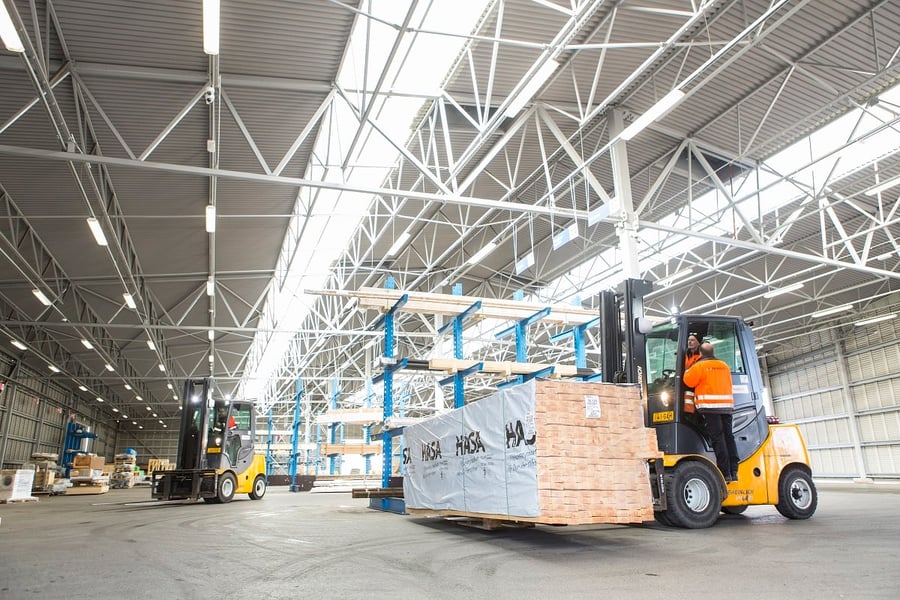What is in-house logistics?
What does in-house logistics mean?
In-house logistics usually refers to the processing of materials and products purchased from a logistics partner. The work is usually performed on the company’s premises using the company’s systems. When operating in the field, for example shelving customers’ products in shops or servicing machines and equipment, the tools are provided by the logistics partner.
Common work stages in warehouses are the receipt, picking, packaging and dispatching of goods and the processing of returns. The process may also include value-added services, such as the assembly of sales racks, pre-installation of products, maintenance of product information, special handling of textiles, etc. In terminals and production facilities, in-house logistics is subject to many different requirements with regard to the operating environment and processes. The main rule is that it is the logistics partner’s responsibility to take into account the customer’s quality and safety requirements and to ensure the competence of the personnel.
What are the alternatives to outsourcing in-house logistics?
Companies value diverse service providers that are able to respond to different needs flexibly and skillfully.
Outsourcing opportunities:
- Traditionally, temporary staffing has been used to bring flexibility to warehouse operations, either during busy times or more permanently according to peak seasons and seasonal fluctuations. The challenge of this otherwise good model is often employee turnover, which results in lost benefits due to increased orientation and training costs.
- Another option for companies is to establish a logistics partnership. In this case, the employees are supervised by the partner and the customer pays for the service per performance, whether it is a parcel, a box, a kilo or a cubic meter. The customer incurs costs only when the performance in question has been delivered as agreed. This model is more affordable and easier for the customer.
- The customer’s warehouse can also be transferred to the service provider’s facilities and systems, in which case we are talking about comprehensive outsourcing. In addition to facilities and personnel, the service can include transport, warehousing and supporting ICT solutions. This will result in savings through the optimization of, for example, online stores’ warehouses, shops, transports and direct deliveries.

Make an outsourcing decision – choose a reliable logistics partner
- Make the decision on the change sufficiently quickly, trusting actual figures
- Focus on your core business
- Choose a reliable and competent logistics partner
- Ensure that the partner has the competence to continuously develop the operations
- Create and test the logistics cost structure and operating model together with the partner
- Choose the most suitable degree of logistics outsourcing for your company
- Purchase warehousing and the associated services from the partner; as a result, the costs of premises start to reflect the volume and machines and equipment are removed from your balance sheet
- Outsource logistics work in part or in whole and continue cooperation with the partner on your premises
- Outsource your own logistics employees to the partner. No need for layoffs and always the right number of skilled employees and amount of competence for any situation and moment.
Looking for a reliable and experienced in-house logistics partner? Learn more about the benefits of outsourcing and our service offering!
Contact us and we will tailor a service package that suits your specific needs!
